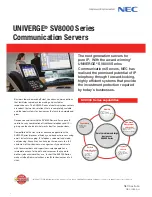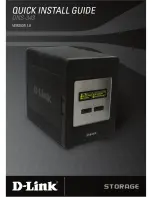
Problem Solving 5-7
Monitoring POST
Each time you turn on the system, the Power-On Self-Test (POST) runs automatically
and checks the system board, processor board, memory, keyboard, and most installed
peripheral devices.
During the memory test, POST displays the amount of memory that it is able to access
and test. Depending on the amount of memory, it may take several minutes to complete
the memory test.
Press
F2
to enter SETUP. If you do not press
F2
, the above message remains for a few
seconds and the boot process continues.
If POST finds an error, it displays an error message and, in case there is a problem with
the display, it emits a series of long and short beeps. Write down any beep code
emitted. This information is useful to your service representative.
Refer to the “BIOS User’s Information” section in this chapter for a list of items to
check for each error code and for an explanation of the error beep codes.
The POST Tests table at the end of this chapter lists keys active during POST and
provides a description of errors that may occur.
The BIOS indicates errors by writing an error code to the PS/2-standard logging area in
the Extended BIOS Data Area, and by displaying a message on the screen, which is
sometimes preceded by the POST Error Code. The error code will also be logged to the
Event Logging area.
Report any error code to your service representative.
Summary of Contents for Express5800/120Mc2 series
Page 1: ... U s e r s G u i d e EXPRESS5800 120Mc2 ...
Page 2: ...xxx ...
Page 3: ... U s e r s G u i d e EXPRESS5800 120Mc2 ...
Page 50: ...2 18 Setting Up the System ...
Page 106: ...4 34 Upgrading Your System Plugging in the AC Power Cords ...
Page 154: ...B 22 Management Workstation Application ...
Page 155: ...C System Status Hardware Support Information ...
Page 166: ...10 Glossary ...
Page 171: ...xx ...
Page 172: ... 456 01524 000 ...
















































